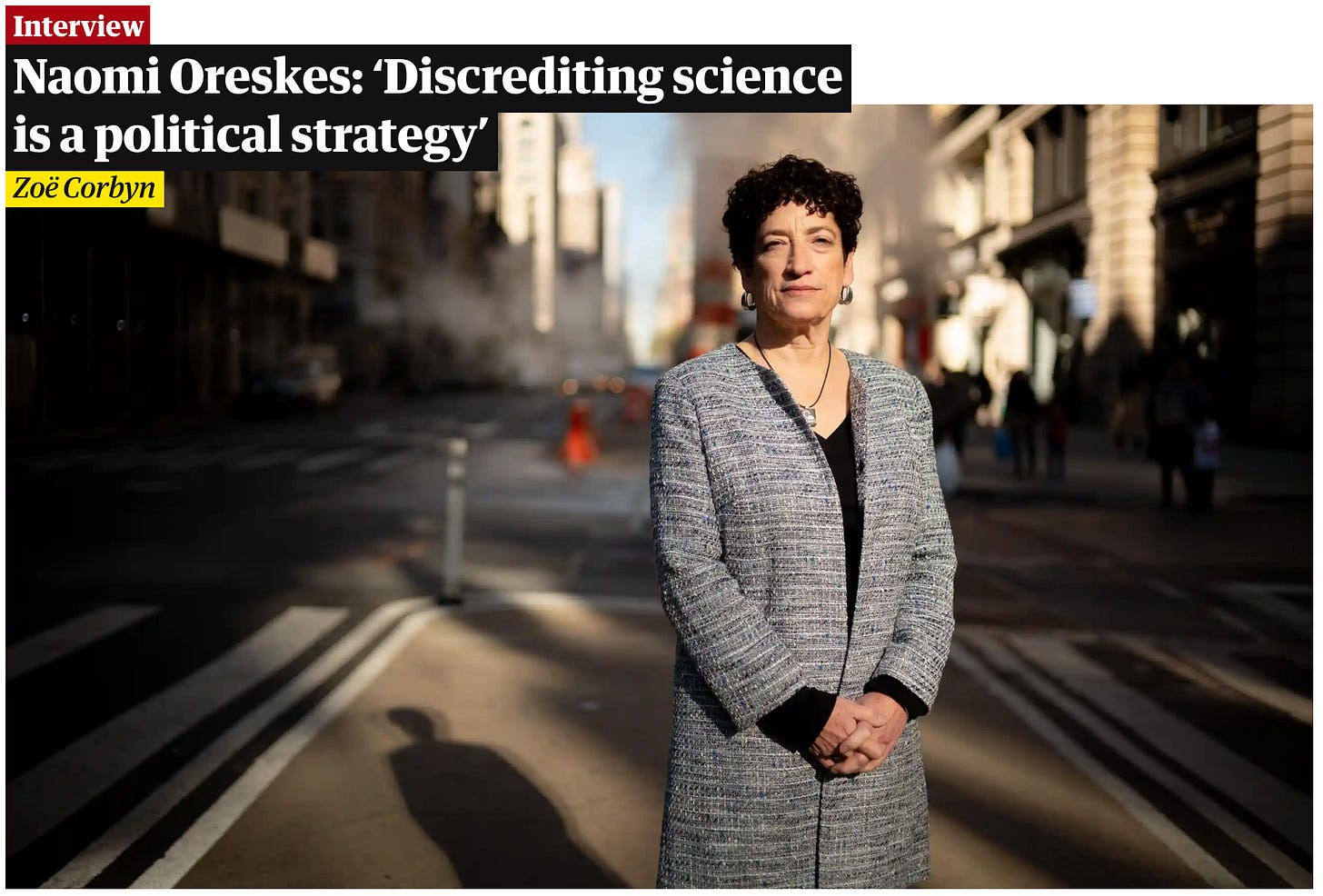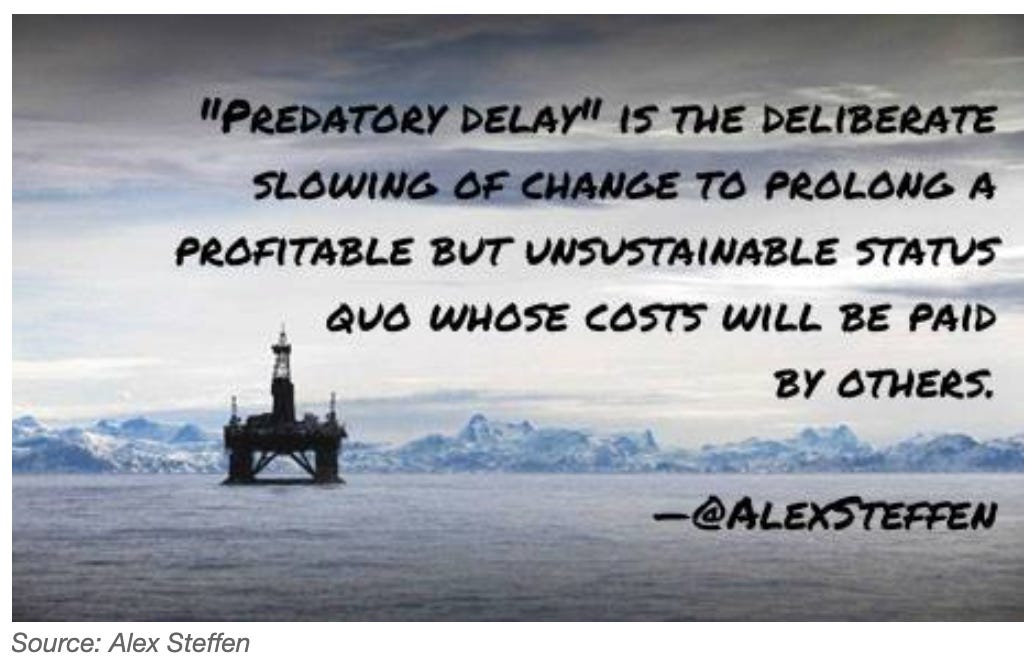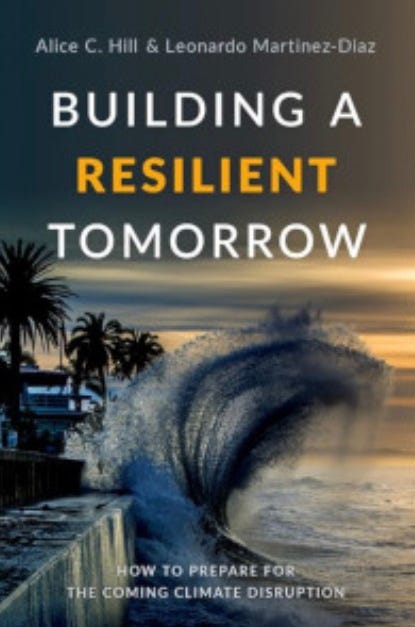Was Gandalf a Tree Hugger?
10 Climate Change Resources You May Have Missed the First Time Around | ISSUE 25, Nov. 4, 2019
Some days, I curl up in a fetal ball with my aging cat after touring that day’s intense climate headlines. Other days, I gently interrupt her catnap. I dash to my Mac to highlight climate resources worth a second look—in case you missed them the first time. Here’s an occasional Changing Climate Times series: “10 Climate Resources You May Have Missed the First Time Around.” If you’re new to exploring climate change these resources might be a good place to start. If you are more informed about climate change these resources might be worth sharing with others.

1 | CLIMATE QUOTE: What Gandalf said

“All we have to decide is what to do with the time that is given us.”~Gandalf
I have a personal theory that all the metaphors we need to address climate change can be found in “Lord of the Rings.” You must admit, Gandalf could well be addressing the most pressing issue facing our species in 2019—and not the most pressing one facing Middle Earth and the return of the evil Sauron. What will each of us do about climate change?
“I wish it need not have happened in my time,” said Frodo. “So do I,” said Gandalf, “and so do all who live to see such times. But that is not for them to decide. All we have to decide is what to do with the time that is given us.”

2 | CLIMATE MEME: Start With the Heart

Please steal this meme. | changingclimatetimes.substack.com
I made this meme after seeing this succinct quote by climate scientist and communicator Katharine Hayhoe. It’s from a popular 2018 TED talk, chock full of good advice. The core of her talk is we all need to be talking—with each other and in our communities—about the threat a rapidly heating planet poses to our shared lives. That’s regardless of how we identify politically or socially:
The most important thing to do is, instead of starting up with your head, with all the data and facts in our head, to start from the heart, to start by talking about why it matters to us, to begin with genuinely shared values. Are we both parents? Do we live in the same community? Do we enjoy the same outdoor activities: hiking, biking, fishing, even hunting? Do we care about the economy or national security?
After having had thousands of climate conversations, Hayhoe notes that “just about every single person in the world already has the values they need to care about a changing climate. They just haven't connected the dots. And that's what we can do through our conversation with them.” | READ ON

3 | CLIMATE NEWSLETTER: Crowdsourcing Conversations

Fellow newsletter editor Ryan Hagan’s “Crowdsourcing Sustainability” is an inspiring, practical read. His latest issue picks up on Hayhoe’s theme—everyone needs to be talking more widely about climate change. But most people, notes Hagan, are not discussing climate change, despite the riptide of headlines:
A majority of people believe it’s happening (67%). Only 16% don’t think it’s happening. And a majority of people are worried about it (60%). But hardly anyone is talking about it (only 23% talk about it at least once a month… 63% of people rarely or never talk about it).
Hagan dips into some social science about why this may be so. Yale and George Mason researchers suggest there is “a spiral of climate silence.” Even people who care about the issue shy away from discussing it because they so infrequently hear other people talking about it—reinforcing the spiral, he writes:
… Before we can solve anything, we need to start talking about it way more than we are right now. So, if you’re not already, I encourage you to speak up. It’s one of the most powerful things we can do. | READ ON

4 | CLIMATE VIDEO: ‘But What Can I Do?’
First, view the inspiring video below. Then, pass it forward. If you’re a teacher, show it in class. If a parent, share with kids. If a youth activist, share it with older folks. The video is by Megan Herbert, co-author with climate scientist Michael E. Mann of the award-winning children’s book “The Tantrum That Saved the World.” (We profiled the book in Issue 7, Item 6.)



5 | CLIMATE Q-AND-A: No More Excuses

Naomi Oreskes: ‘It is deeply problematic if the leadership of the US government is rejecting science.’ Photograph: Phil Penman | The Guardian, Nov. 3, 2019
Strategies of climate change denial morph constantly. They range from disputing confirmed climate science outright, to Exxon’s misdirection and misinformation even though their own scientists forecast climate change as far back as the 1980s.
Naomi Oreskes, a Harvard professor of the history of science, is best known as co-author with Erik Conway of “Merchants of Doubt: How a Handful of Scientists Obscured the Truth on Issues from Tobacco Smoke to Global Warming.” The book traced tactics used by professional climate deniers. In her new book “Why Trust Science?,” Oreskes argues that if more people heard scientists talk personally about their values, it would help turn back the creeping tide of anti-science sentiment.
She recently testified to Congress on “Examining the Oil Industry’s Efforts to Suppress the Truth about Climate Change” and “Dark Money and Barriers to Climate Action.” She is blunt about climate change denial and the importance of the peer-reviewed science that has proven time and time again climate change is no theory:
“Human-induced climate change is under way. It’s no longer a matter of trust; our scientists have been shown to be right. Climate change deniers have run out of excuses.”~Naomi Oreskes | READ ON

6 | CLIMATE MAP: Water, Water, Everywhere

The heart of Shanghai, one of Asia’s most important economic centers, could be underwater by 2050, unless global temperatures are not brought under control, easing melting ice that raises sea levels. | New York Times
A New York Times story published last week was shocking. It wasn’t the words—which were daunting enough. But the maps:
Rising seas could affect three times more people by 2050 than previously thought, according to new research, threatening to all but erase some of the world’s great coastal cities.
New satellite techniques have created more accurate maps of how disastrous rising sea levels will be to coastal cities and deltas, from Alexandria to Mumbai, Basra to Shanghai. The research shows 150 million people—that’s almost half the population of the United States—now live on land that will be below the high-tide line by 2050.
Countries should start preparing now for more citizens to relocate internally, says Dina Ionesco of the International Organization for Migration:
“We’ve been trying to ring the alarm bells,” Ms. Ionesco said. “We know that it’s coming.” There is little modern precedent for this scale of population movement, she added.
These maps should be required study for anyone in any position of authority anywhere in the world right now.

7 | CLIMATE TWEETS: How We’re Going to Live
So, what can you or I do? Maybe reinvent what you do and how you do it:

Plus, some good advice from the same Twitter thread:


8 | CLIMATE GLOSSARY: “Predatory Delay”

I’ve been collecting illuminating climate-related coinages toward creation of a “Climate Change Glossary.” Alex Steffens’ phrase, “predatory delay,” describes a host of go-slow economic and political strategies to ward off the World War II-style mobilization needed to address climate change.
The phrase also speaks to decades-old tactics by the fossil fuel industrial complex, to preserve its billions-of-dollar business model—even as Earth heads into anaphylactic shock:
We’ve allowed these opponents of progress to define what the future can be. The best way to keep people from demanding change is to convince them that change is impossible. The best way to convince them nothing can change is to make sure they can’t visualize what change would look like. Billions of dollars buys a lot of blindness. We live in a time of mobilized deception, of predatory delay.
Steffans’ describes himself as a “planetary futurist.” He stresses the importance of imagining “heroic futures.” He wrote the following words in 2016, but they are ever more pressing:
We’re racing against catastrophe. Before we can win, we’ll need a cultural moment when millions of people — designers, artists, engineers, entrepreneurs, planners, politicians — dream in public about choosing a better way, and become a movement to fight for it. What could that Zeitgeist be like? Imagining that is now every bit as critical as, say, inventing better solar panels — because now every successful future involves not only making things never before made, but changing things never before changed. That is the future we must learn to see. | READ ON

9 | CLIMATE BOOKS: Building Resilience

’Resilience’ is a key word in maintaining a healthy outlook for one’s mental health. It’s also a good watchword for preparing cities, communities and countries for the rising stress and challenges of climate change.
The magazine The Revelator has an article recommending November’s best environmental reads, including ones on climate adaptation, wildlife coexistence, the Green New Deal and climate resilience. The books all stress a theme that is also the theme of this newsletter: ‘We’re stronger together than apart.’
A new book by former Obama administration officials focuses on ways to reduce or minimize climate disruption and build resilient systems that can survive and persist: “Building a Resilient Tomorrow: How to Prepare for the Coming Climate Disruption” by Alice C. Hill and Leonardo Martinez-Diaz
For those thirsting for real-world solutions that are already being tried and tested, this is the book, said one reviewer:
“While squarely confronting the scale of the risks we face, this pragmatic guide focuses on solutions—some gradual and some more revolutionary—currently being deployed around the globe.
“The narrative is dotted with tales of on-the-ground citizenry, from small-town mayors and bankers to generals and engineers, who are chipping away at financial disincentives and bureaucratic hurdles to prepare for life on a warmer planet. For readers exhausted by today's paralyzing debates on yearly "fluke" storms or the existence of climate change, Building a Resilient Tomorrow offers better ways to manage the risks in a warming planet, even as we work to limit global temperature rise.”

10 | CLIMATE CARTOON: T.G.I.F


PS | Pass It Forward
If this issue was forwarded to you, subscribe for free to the newsletter & podcast at: changingclimatetimes.substack.com. Subscribe to the podcast on iTunes and wherever you listen to podcasts. | Follow us on Twitter at @TimesClimate | Send feedback and suggestions to: douglasjohnmartin AT icloud.com.
And remember:
Change the World. Not the big one. The one in which you live. And love. Be well. | CCT Curator, Concierge and Host Douglas John Imbrogno


